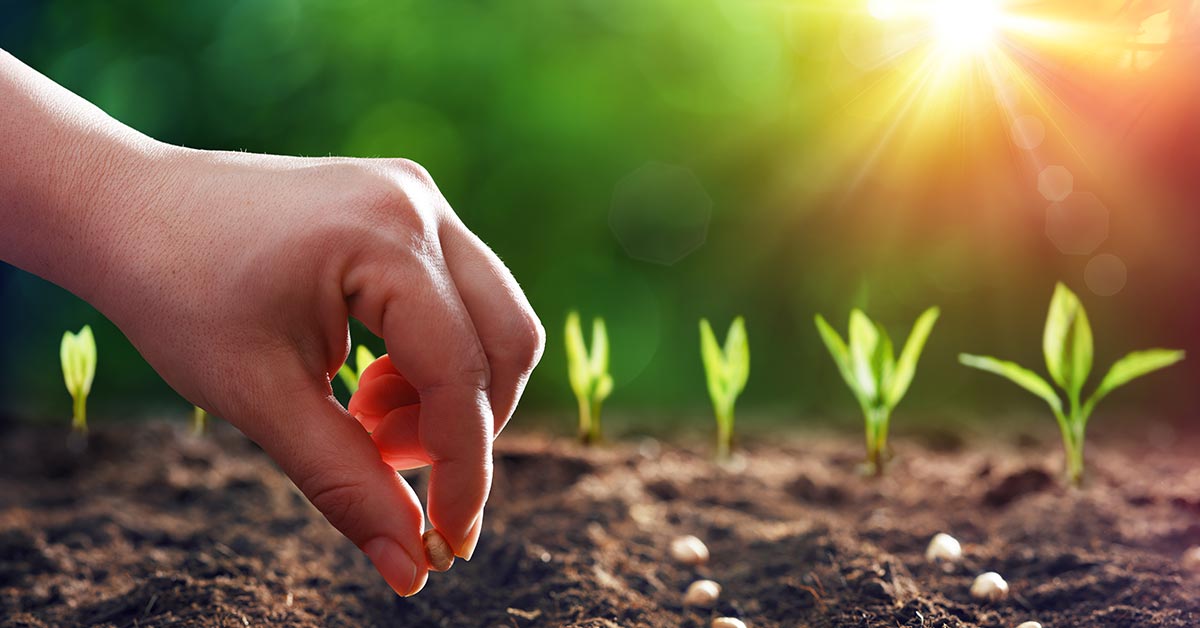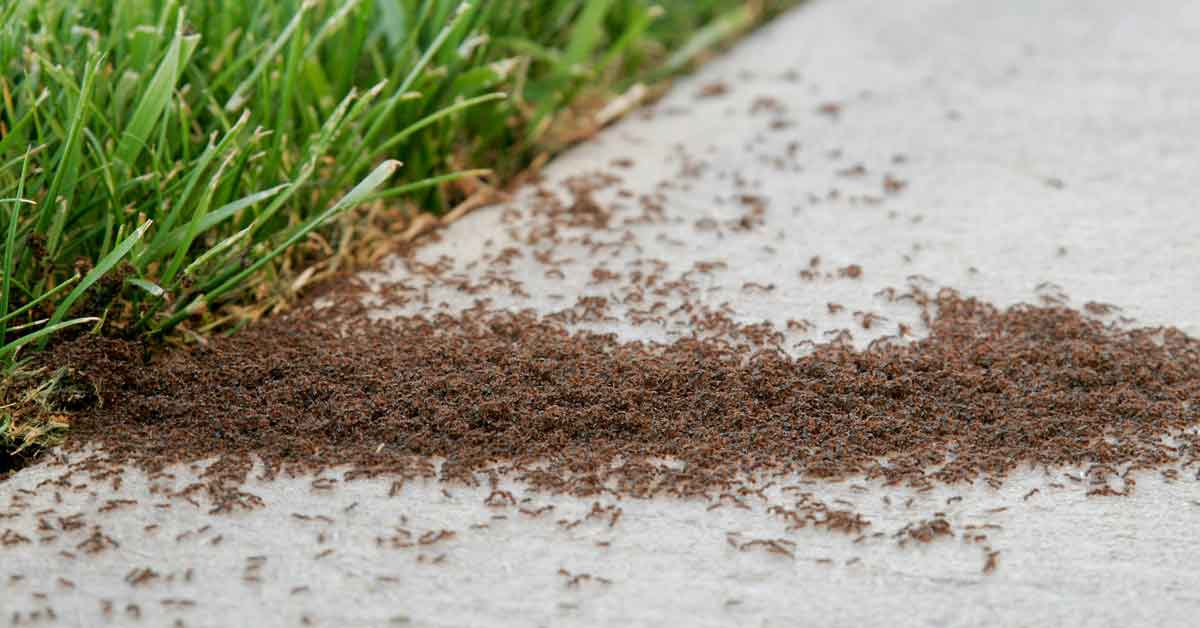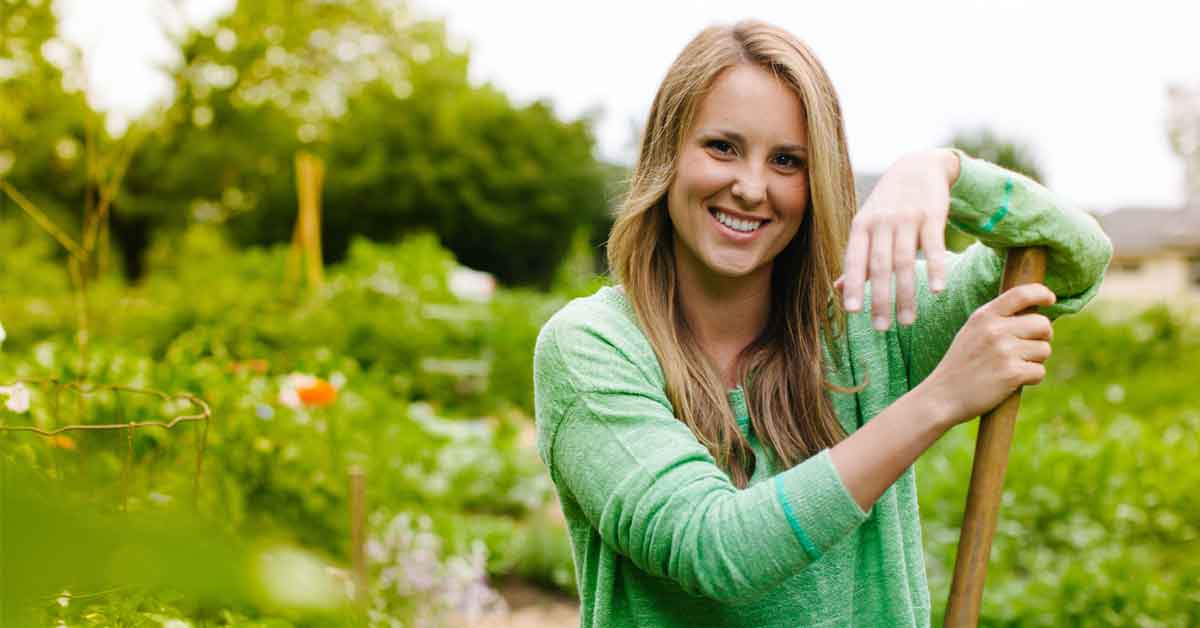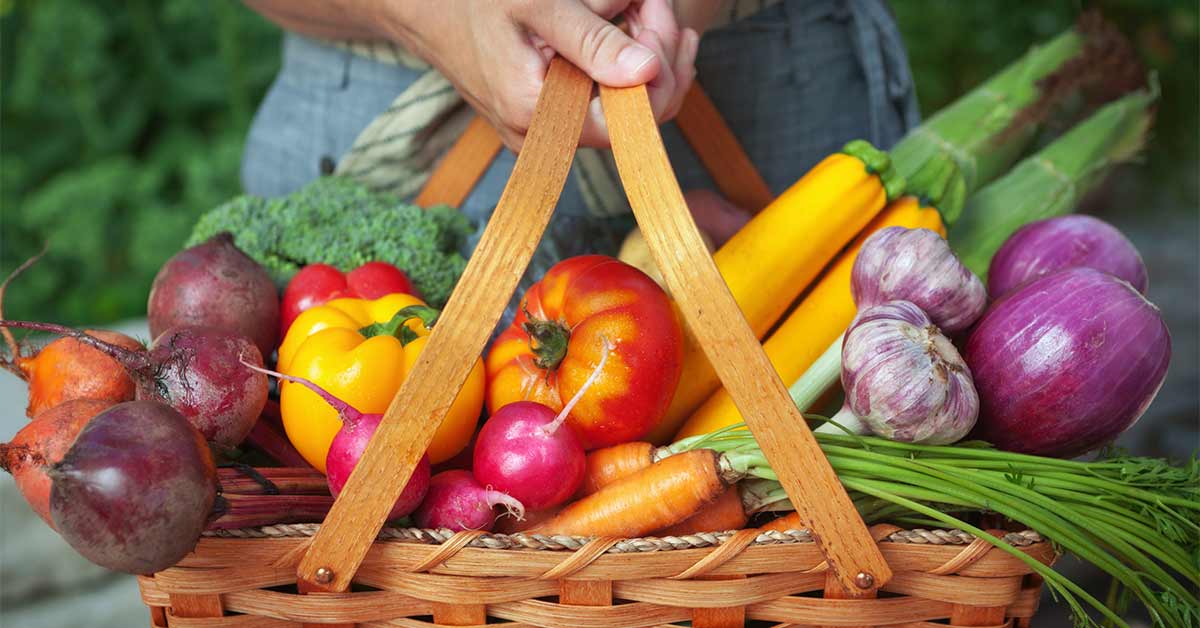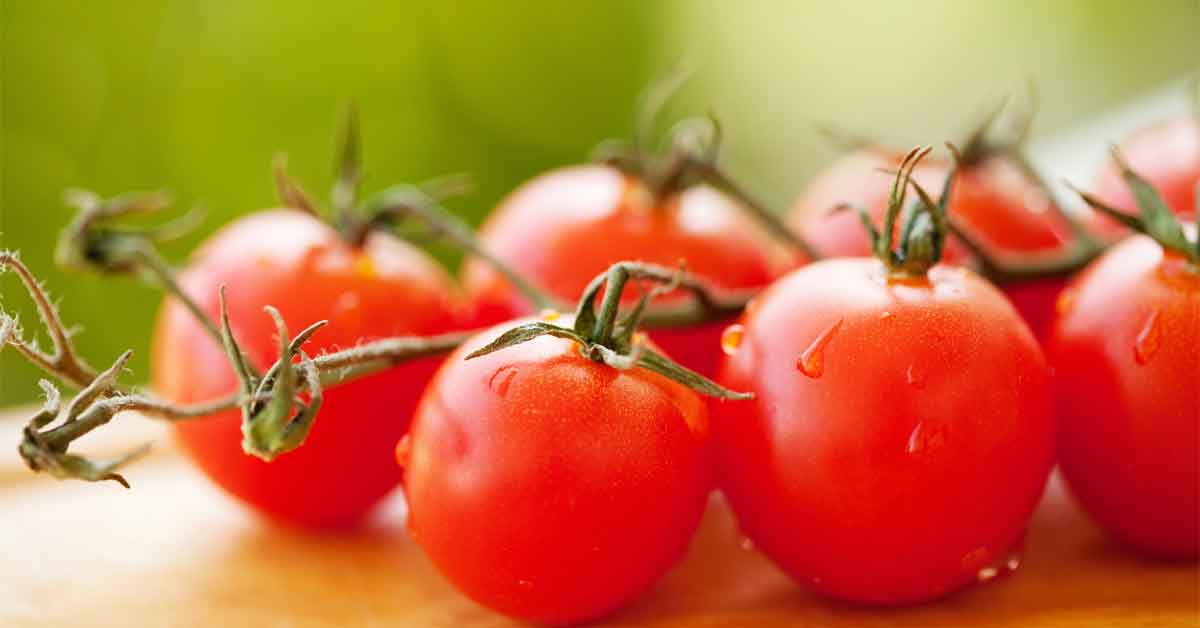How to Start a Vegetable Garden
- How to Choose Your Garden Spot
- How to Prepare Vegetable Garden Soil
- How to Plant a Vegetable Garden
- How to Maintain a Vegetable Garden
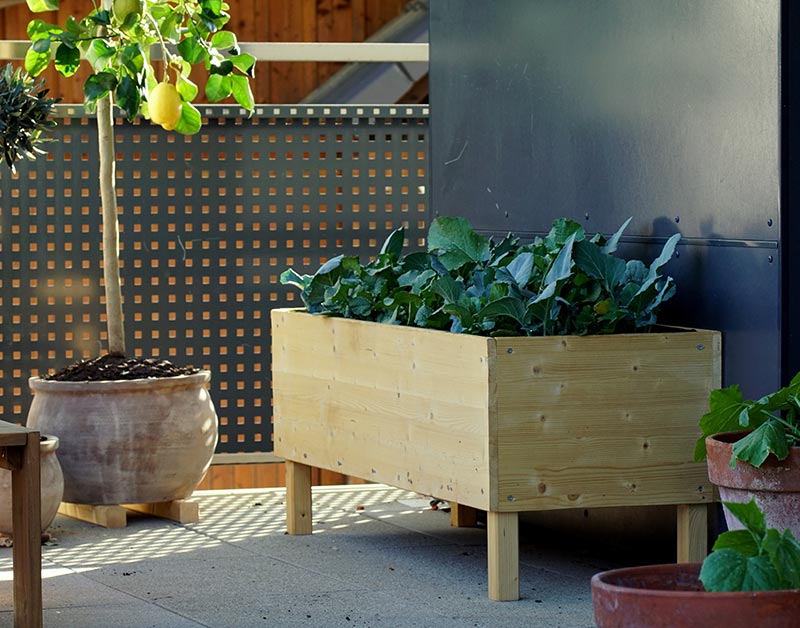
Vegetable gardens aren't limited to in-ground garden plots.
How to Choose Your Garden Spot
Vegetable gardens need at least six to eight hours of direct sun each day for peak productivity. The more sun your vegetables receive, the bigger and better your harvests. Warm sunny gardens attract more pollinators, ensuring blossoms on tasty tomatoes and other fruiting vegetables get pollinated and produce crops. If you garden in southern climates with intense hot sun, choose a spot with plentiful morning sun and afternoon shade. Well-drained, level areas are ideal for vegetable gardening. Vegetables don't like soggy feet, but they also don't tolerate irrigation that runs off instead of soaking in. Choose a site away from trees. Their leaves shade your vegetables, and their roots steal water and nutrients meant for crops. If you love to cook, consider a spot close to the kitchen door, so fresh herbs and veggies are close at hand. Simplify watering with a faucet or hose connection nearby, too. If you're short on space, that's okay. You can grow your vegetable garden in containers. Raised garden boxes and raised beds offer options for backyards and balconies. The boxes elevate your garden above ground level, so it's easier to tend and harvest. Plus, you can premix a perfect blend of organic matter, soil and nutrients. If cucumbers or other vining crops make your list, you can take garden goals higher with a trellis.
Adding organic matter and soil amendments can improve vegetable garden soil.
How to Prepare Vegetable Garden Soil
Don't rush to plant when spring arrives. Soil usually needs time to dry. Working your garden before it's ready compacts soil and damages soil structure. That makes it harder for vegetables to grow well. Before your start, squeeze a handful of soil. If it forms a firm clump, it's too wet. If it crumbles when your hand opens, it's ready. Soil testing helps ensure your vegetables thrive. Test results reveal soil pH and recommend soil amendments. Vegetables grow best in fertile soil, rich in organic matter with pH between 6.0 to 7.0. Improve your soil by working a layer of organic compost down 6 inches deep, the growing zone for most vegetable roots. Without sufficient calcium, vegetables such as tomatoes, peppers and melons suffer blossom end rot disease. Garden lime restores balance to overly acidic soil and provides added calcium. Garden gypsum adds calcium without altering soil pH. An all-purpose balanced fertilizer like Pennington Rejuvenate Plant Food All Purpose 4-4-4 helps ensure your veggies start life with the nutients they need. Created to work with nature, this fertilizer revitalizes soil with essential plant nutrients and a blend of organic and natural ingredients to nourish plants from the inside out.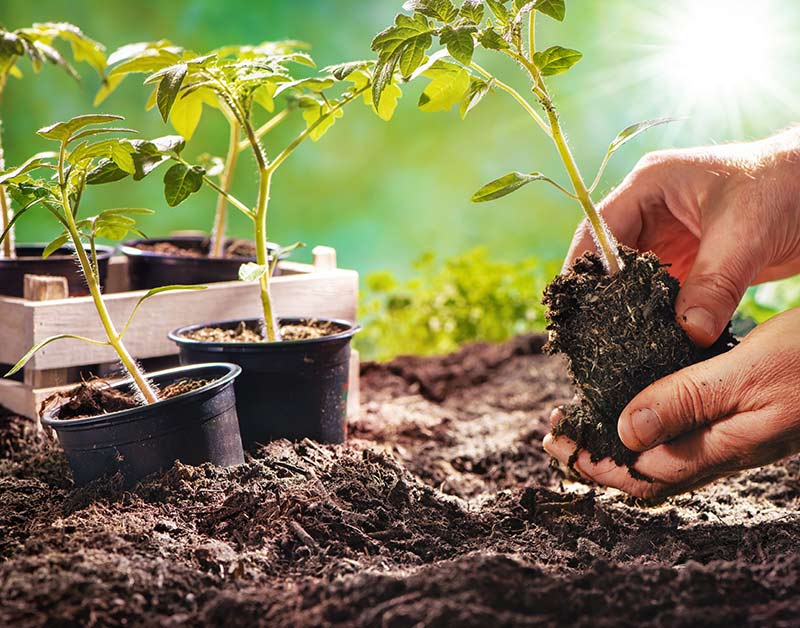
Tender tomato transplants move outside when weather warms.
How to Plant a Vegetable Garden
Most common U.S. garden vegetables get replanted every year. They naturally die at season's end or succumb to winter. Some vegetables are grown from seeds planted directly outside. Others need early starts indoors. Tropical natives, such as tomatoes and peppers, require longer growing seasons than many U.S. gardens provide. Most gardeners grow these vegetables from small plants called transplants to provide a head start. Take time to learn whether seeds or transplants are your best choice for the vegetables you want to grow. If you're unsure what works best in your area, your local county extension office can help. Think of the vegetables you and your family love to eat and focus on those. If this is your first garden, consider easy fruits and veggies for beginners. If garlic is in every meal at your house, grow garlic for sure. Vegetable seed packets explain when and how deep to plant, how far to space seeds, and when to expect a harvest. Plant tags on vegetable transplants have planting, spacing and harvest times, too. Some vegetables, such as lettuce, spinach and kale, love cool temperatures. Their seeds go straight into cool spring soil. Plant these seeds every two to three weeks and keep harvesting right up to summer heat. Bell pepper, eggplant and zucchini squash transplants don't go out until danger of spring frost has passed. You can plant vegetables in tidy rows or get creative. Anything goes in your garden as long as you space your vegetables well. You can even intersperse vegetables with garden flowers and other plants in an edible landscape that delivers food, flowers and color.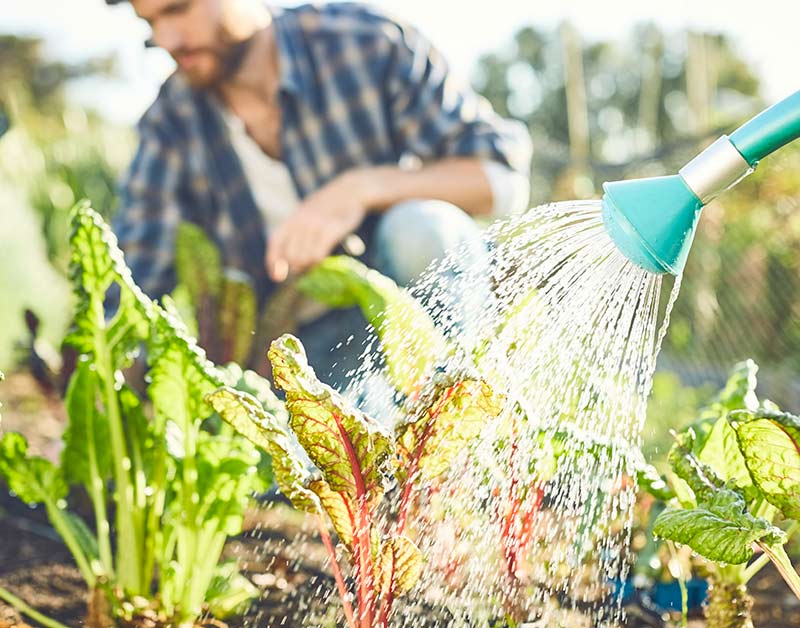
Consistent water, fertilizer and pest control help vegetable gardens excel.
How to Maintain a Vegetable Garden
Without consistent moisture, vegetables can't flourish. Give your vegetable garden at least 1 inch of water per week, including rain. That's enough to wet soil 6 to 8 inches deep. When soil dries 1 to 2 inches deep, water thoroughly. Water early in the day, so leaves dry well before evening.
Vegetables are heavy feeders. Fertilize your crops every 12 to 16 weeks with the same fertilizer used at planting time. Supplement with natural-based Alaska Fish Fertilizer 5-1-1 or Alaska Morbloom 0-10-10 for bigger, better harvests.
Protect against vegetable insect pests at the first sign of damage. Sevin Insect Killer Ready To Use2 is ideal to kill listed pests on contact for spot treatments and smaller garden areas.
Economical Sevin Insect Killer Concentrate, designed for use with a pump-style sprayer, kills by contact and simplifies treating and protecting larger areas for up to three months.+ With convenient Sevin Insect Killer Ready To Spray, just attach a garden hose and it does the measuring and mixing as you spray. Pests are killed by contact and protection keeps working for up to three months.+ Always avoid spraying open blooms to protect visiting pollinators.
Prevent and control vegetable diseases such as anthracnose, leaf spots, blights and mildews with Daconil Fungicide Ready To Use or Daconil Fungicide Concentrate. Follow label instructions for your specific vegetable to control, stop and prevent fungal disease.
From spring's first tender lettuce leaves to summer-warmed tomatoes and fall's final winter squash, vegetable garden harvests are times to celebrate and share success with family and friends. The GardenTech family of brands is here to help you learn and grow garden vegetables and achieve all your gardening dreams.
+ Except fire ants, fleas, ticks and mosquitoes
Always read product labels thoroughly and follow instructions, including guidelines for pre-harvest intervals (PHI) and application frequency.
GardenTech is a registered trademark of Gulfstream Home and Garden, Inc.
Sevin is a registered trademark of Tessenderlo Kerley, Inc.
Daconil is a registered trademark of GB Biosciences Corp.
Pennington is a registered trademark of Pennington Seed, Inc.
UltraGreen and Alaska are registered trademarks of Central Garden & Pet Company.
Sources:
1. Jolene Hansen, "Hydroponic Gardening Basics," Earth Juice
Get Monthly Gardening Advice!

